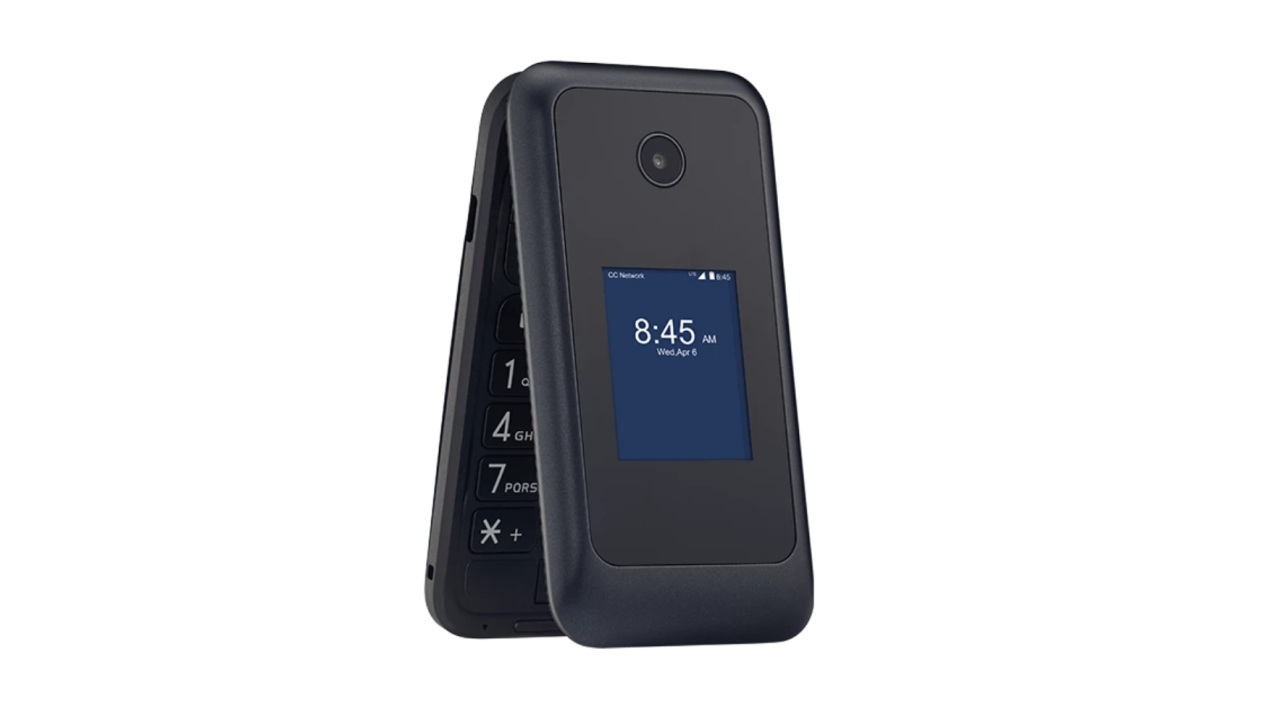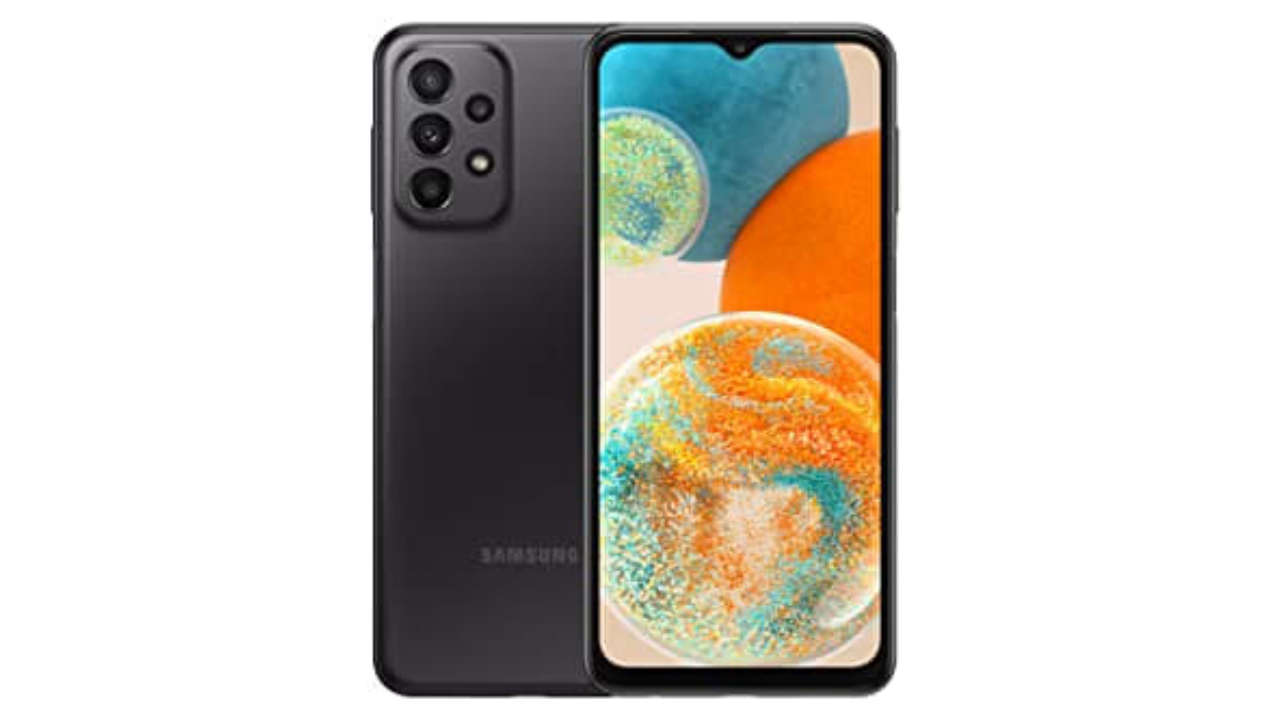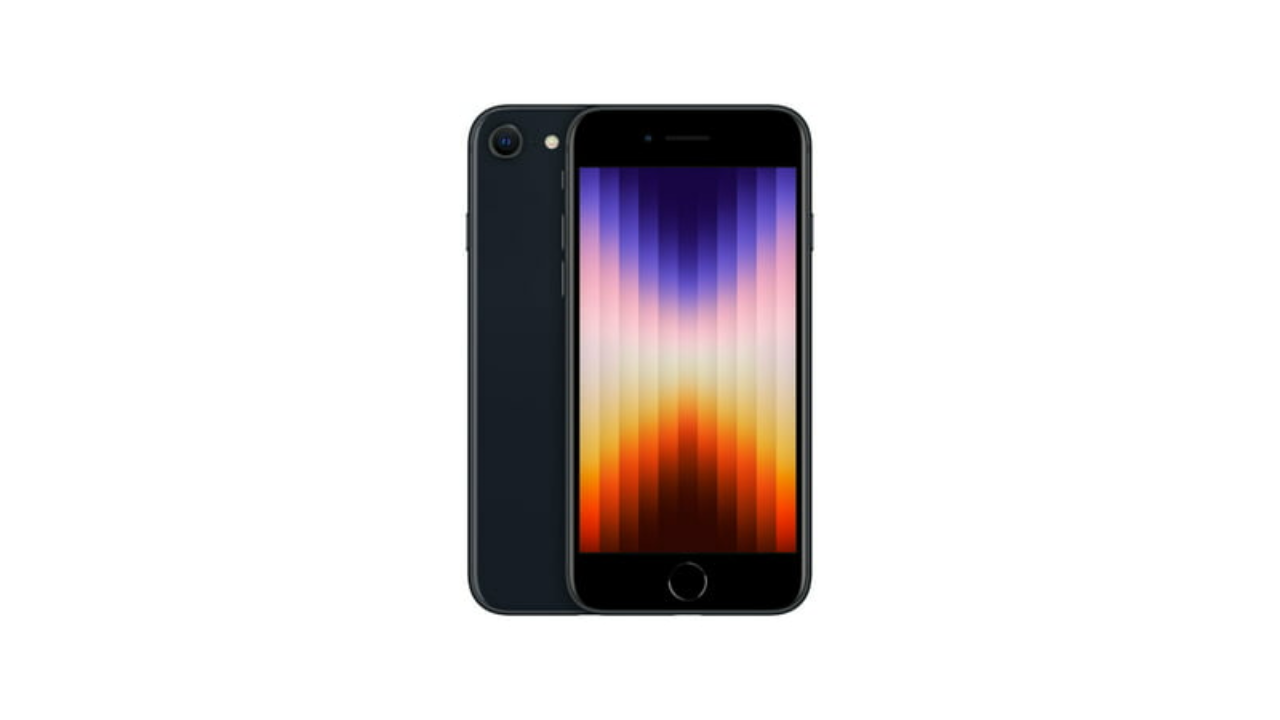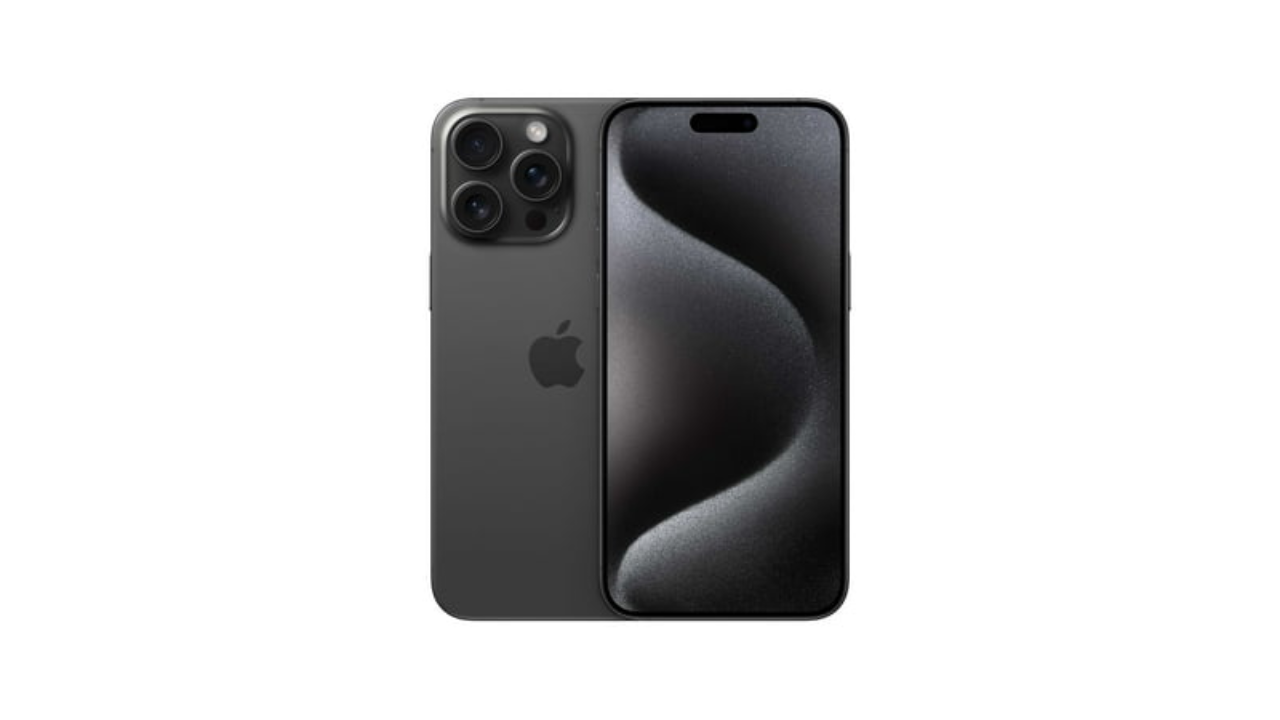We may earn commission from links on this page, but we only recommend products we believe in. Pricing and availability are subject to change.
The 6 best cellphones for seniors in 2024
These days, everyone needs a cellphone, but not everyone needs the same apps, features and functions on their phone. That’s especially true when it comes to seniors, who benefit most from having a lifeline to friends, family and emergency services but could likely do without a bunch of social media apps, for example. Thankfully, many cellphone providers make models better suited to seniors, including features such as larger buttons and wider screens, plus unique safety apps that make these devices easier to use and more practical in general. Many of them are still considered smartphones, just without the unnecessary frills.
Lively Jitterbug Smart3 Smartphone for Seniors
Best overall phone for seniors
Consumer Cellular Verve Snap
Best flip phone for seniors
SAMSUNG Galaxy A23 5G A Series Cell Phone, Factory Unlocked Android Smartphone, 64GB, Wide Lens Camera, 6.6” Infinite Display Screen, Long Battery Life, US Version, 2022, Black
Best affordable Android phone
Verizon iPhone SE 3rd Generation 64GB Midnight
Best affordable iPhone
Apple iPhone 15 Pro Max 256GB Black Titanium (AT&T)
Best big-screen iPhone
GrandPad Senior Tablet with Phone Capabilities, 4G LTE, Wireless Charger, Stylus, - 1 Month Premium Service Plan Included, Purchase a Plan at Activation
Best smartphone that's also a tablet
The best cellphones for seniors should also be easy to use, of course, with a large, bright screen, a simple interface and ideally some accessibility features for users with physical challenges (such as eyesight or motor skills). With those criteria in mind, I've identified what I consider the best picks for 2024.
Read More:
Best cellphone for seniors overall
Battery life: 3500mAh, 6 hours talk time | Camera: 5 MP front camera and two rear cameras: 13 MP with auto focus, and 5 MP with a flash | Extra features: Voice typing, video chat | Storage: 32 GB | Screen size: 6.22 in.
Android phones and iPhones can be made senior-friendly, but the Smart3 arrives that way: It's a phone made specifically with seniors in mind.
In place of a sea of cryptic icons, it offers a handful of core features (e.g., phone, text messages and email) represented by large buttons that are clearly labeled with a simple menu accessed via a touchscreen. And at the very top is an “Urgent Response” button for quick access to live caregivers who can assist with everything from rides for minor health issues or immediate response during an emergency. (It can also be set to notify friends and family if that emergency button gets tapped.)
The phone itself is quite affordable, and service plans start at just $20 per month. While it’s not the most capable smartphone available, it is a great option for seniors looking for the basics and added safety measures.
- Relatively inexpensive compared to most other smartphones
- Easy to use
- Offers live support in case of emergency
- Very basic compared to iPhone and Android phones
- Overage fees can add up quickly when not on an unlimited plan
Other top cellphones for seniors we recommend for 2024
Battery life: 1600mAh, 14 hours talk time, 16 days standby time | Camera: 5-MP | Extra features: Video recording, hearing aid compatibility | Storage: 8 GB | Screen size: 2.8 in.
For some older adults, a smartphone can seem like a Ferrari: too fast, too complicated. In that case, a simple flip phone might be the best bet, and it's hard to beat Consumer Cellular's Verve Snap.
Priced at just $49, it's the cheapest option here by far. It doesn't have apps, of course, and texts are complicated to send with the keypad (remember: no keyboard here). But there's a camera and even support for Bluetooth headsets, in case hands-free calling is preferred.
Although a smartphone will be the best option for the more tech-savvy, this is an easy and affordable way to stay connected to loved ones and access emergency services if needed.
- Very easy to use
- Least expensive option on our list
- Decent camera
- No apps available
- Lack of keyboard makes texting difficult
Battery life: 5000 mAh, 2 days mixed use time | Camera: 50 MP main camera, 8 MP selfie camera | Extra features: Bluetooth compatible, wide lens camera | Storage: 64 GB | Screen size: 6.6 in.
The A23 5G is Samsung's entry-level Galaxy phone, but it still offers plenty of great features — starting with “Easy Mode,” which simplifies the interface to make it more senior-friendly.
Stocked with a hefty battery and fast charging capabilities, along with a high-resolution display and four quality camera lenses, the A23 is a great entry-level choice. If you love taking snaps of the grandkids or a fun selfie in front of a glorious scenic backdrop, you'll appreciate the robust storage options (up to 1 TB via microSD cards), a feature not found on any iPhone. The 6.6-inch large screen is downright huge, making it perfect for seniors with vision limitations.
And because this phone is unlocked for use with all phone carriers, you have the freedom to choose the carrier with the most affordable connectivity options in your area.
- Easy Mode offers a user-friendly interface
- Long-lasting battery
- Loads of storage to hold photos, videos, music and apps
- May leave tech-savvy seniors wanting more
- The camera and video clarity are sub-par compared to other smartphones
Battery life: 2018 mAh, 15 hours of video playback | Camera: 12 MP rear wide camera | Extra features: Touch ID, video recording | Storage: 64 GB | Screen size: 4.7 in.
An affordable iPhone? We know, it sounds too good to be true, but you can snag this beauty from Verizon for just $5 per month (for 36 months at 0% interest).
Even though this is Apple's baseline model, it still packs plenty of power, a bright display and excellent cameras. It also has a physical Home button, something tech-challenged seniors will appreciate. Take note, however, that the screen is on the smaller side, at 4.7 inches, so if you have vision limitations, this may not be the phone for you.
That said, if you are looking for a smartphone that fits easily in your pocket, this is a great option compared to larger, bulkier mobile phones.
- The least expensive iPhone
- Physical home button helps simplify navigation
- Compact size is easier to hold and slip into a pocket
- 4.7-inch display may not be a good fit for vision-impaired
- Camera lacks a night mode
Battery life: 4441 mAh, 1 day of mixed use | Camera: 48 MP main camera, 5x telephoto lens | Extra features: Car crash detection, Wi-Fi calling | Storage: 256 GB | Screen size: 6.7 in.
Apple's flagship phone answers the call for users who want the largest possible screen — in this case an expansive 6.7 inches. That makes icons easier to identify, text easier to read and videos of the grandkids just, well, bigger and more fun to watch.
The 15 Pro Max takes dazzling photos and videos as well. We also love that an iPhone paired with the current-generation Apple Watch supports fall- and crash-detection for extra security and peace of mind for loved ones.
Even though it comes with a hefty price tag, you can finance the phone for around $32 per month (for 36 months), with no interest when signing up for a service plan with Verizon or AT&T. (This link will lead you to the latter, but Walmart offers the same model, with the same pricing, on Verizon.)
- Huge screen
- Fantastic camera and battery life
- Pairs with Apple Watch for fall and crash detection
- Most expensive phone on our list
- Large size makes it harder to fit in a pocket
Battery life: 4550 mAh, 8 hours of video playback | Camera: Rear and front cameras each 5 MP | Extra features: Video calls, 24/7 support | Storage: 3 GB | Screen size: 8 in.
It may seem odd to include a tablet in this roundup, but the GrandPad — offered exclusively by Consumer Cellular — is also part phone, offering some of the best of both worlds.
This means it can be used for email, phone calls and hands-free Zoom video calls with distant relatives. Note, however, that even though it does work like a phone, it's not something you would hold to your ear to talk; it's designed to be used as a speakerphone, making it a perfect option for those with arthritis who struggle with holding a phone, or those with vision impairments who need a larger screen display.
In addition, there's baked-in live customer support that's available 24/7, which helps justify the somewhat pricey service plans (which start at $59 monthly). Read my complete GrandPad review to learn more.
- Combination tablet and phone
- Designed specifically for seniors
- 24/7 live support
- No access to Google Play App Store
- No support for ebooks
How we chose the best cellphones for seniors
Every model here is a standout in one way or another, whether it's price, features, usability or some combination of the three. Although I was able to test and review a couple of them, others were chosen by adding reputation and user ratings to the mix. It goes without saying that if dozens of other professional reviewers and thousands of buyers like a product, it must be pretty good.
Factors to consider when choosing a cellphone for seniors
When purchasing a new phone, it’s always important to consider your specific needs and which phone will meet those needs. We recommend considering the following:
Cost: As with any basic phone you buy, there's the cost of the phone itself and the cost of service. Thankfully, while the hardware can range from a few hundred dollars to nearly $1,000 (or more!), you can often take advantage of zero-interest financing to make them more affordable. The iPhone SE above, for example, can be paid off over three years for just $5 per month. The Samsung A23 runs about $8.33 per month when financed through Samsung.
Service: Consider whether you really need an unlimited data plan. If you spend most of your time at home, connected to Wi-Fi, then you probably don't. You can get service from whichever provider offers the best plan to meet your connectivity needs and budget by choosing an unlocked phone. Consumer Cellular, for example, is widely regarded as the "senior-friendly" carrier, with excellent customer service and plans starting at $20 per month. Mint Mobile is another popular option, with plans as low as $15 (amortized) with a prepaid option for a year at a time.
Durability: Although everyday phone durability has improved over the years, with screens that promise to withstand minor bumps and scratches, gravity is not your friend — and a cracked screen is no fun. Whatever phone and carrier you end up with, purchasing a protective case is always a great idea.
Battery life and backup chargers: Speaking of accessories, consider keeping a mobile charger close at hand. Depending on how you use it, your phone's battery life might last a couple of days on a charge or it might expire by dinnertime. If you're near an outlet, you can always plug it in, but a power bank like this one from Anker can help when you're out and about.
Cellphones for seniors FAQs
Is Android, iPhone or something else best for seniors?
Although the Android-versus-iPhone debate has been raging for years, the truth is that neither operating system is especially senior-friendly. One exception: Samsung's Galaxy A23 offers something called Easy Mode. When activated, the functionality makes the user interface (text, icons, onscreen keyboard, etc.) larger and simplifies the home screen. The iPhone can do the same, but it takes a little finagling with the settings to get there.
Is iPhone or Android more user-friendly?
The Android operating system on the whole — navigation, settings, etc. — can be a little complicated. Overall, I find iPhones a bit easier to learn and use, and they offer an unrivaled selection of accessibility features and assistive technology. For example, users who suffer from low vision can enable "Speak Screen," which verbalizes the contents of whatever's currently showing. Those with hearing impairments can toggle the rear LED (normally used by the camera) to flash repeatedly when a call, text or other alert comes in. A triple-click of the side button can activate a camera-powered magnifier, and so on.
Can a smartphone work like a Life Alert System?
Newer iPhones offer safety features like crash detection and, when paired with a newer Apple Watch, fall detection. In the unfortunate event of a driving incident or a tumble, the devices are designed to alert designated family members and even contact on-call emergency services. (Worth noting: Google Pixel phones offer crash detection as well, and fall detection is coming to Google's Pixel Watch.)












